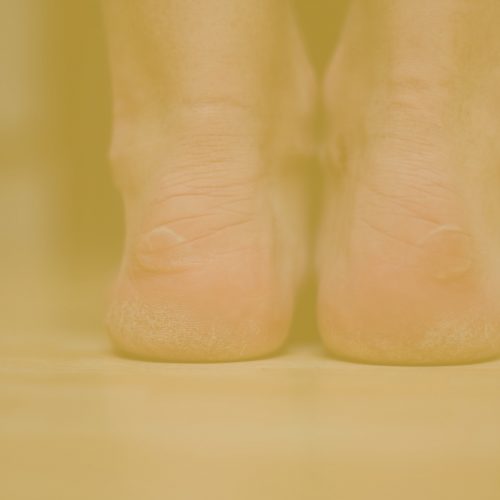Have you ever experienced that sharp pain in your heel when you take your first steps in the morning? It’s a common complaint, often attributed to plantar fasciitis. But what if it’s not? What if there are other conditions masquerading as plantar fasciitis? Let’s explore these look-alike ailments that might be causing your discomfort.
Understanding Plantar Fasciitis and Its Symptoms
Plantar fasciitis is a common foot problem that may be quite severe and affects millions of people all over the world. This ailment typically affects the plantar fascia, a tough band of tissue that runs from the heel bone down to the toes. Its role is to provide structural support to the arch of the foot. Plantar fasciitis is characterised by inflammation or irritation of the plantar fascia, which results in aching and discomfort in the plantar foot.
1. The Onset of Discomfort
One of the hallmark symptoms of plantar fasciitis is the onset of sharp, stabbing pain in the bottom of the heel. This pain is often most pronounced in the morning, right after waking up, or after rest periods. Individuals taking their first steps after inactivity may experience noticeable and sometimes intense heel pain. This sensation is often likened to stepping on a sharp object or a bruise.
2. Gradual Development
In many cases, the development of plantar fasciitis is gradual, with individuals initially experiencing only minor discomfort that they might dismiss as temporary or insignificant. However, the pain tends to intensify over time and become more persistent, affecting daily activities such as walking, standing, or engaging in physical exercise.
3. Factors Contributing to Plantar Fasciitis
There are a number of things that can play a role in the development of plantar fasciitis. Because of the abnormal distribution of weight and pressure on the plantar fascia, those who have flat feet or arches that are abnormally high may be more prone to developing this problem than other people. In addition, straining the plantar fascia and causing inflammation can be caused by unexpected increases in physical activity, such as beginning a new workout regimen or suddenly indulging in more rigorous activities.
4. Impact of Improper Footwear
Wearing footwear that lacks proper arch support or cushioning can exacerbate the symptoms of plantar fasciitis. Shoes with inadequate support fail to absorb shock, increasing stress on the plantar fascia. High heels and shoes with inadequate arch support can also alter the natural biomechanics of the foot, contributing to the development of this condition.
5. Diagnosing Plantar Fasciitis
Diagnosing plantar fasciitis typically involves a thorough medical history review and physical examination. Podiatrists may inquire about the nature of the pain, its onset, and any activities that seem to trigger or worsen it. Palpation of the affected area may elicit tenderness, helping to confirm the diagnosis and ultrasound imaging to determine the extent of pathology and rule out any tears within the facia band.
6. Addressing Plantar Fasciitis
Fortunately, plantar fasciitis is a treatable condition, and many individuals find relief through conservative measures. Resting the foot, especially during acute flare-ups, can help reduce inflammation and allow the plantar fascia to heal. Stretching exercises that target the calf muscles and Achilles tendon can help alleviate tension on the plantar fascia.
7. Incorporating Supportive Footwear
Wearing footwear that provides adequate arch support and cushioning is essential for managing and preventing plantar fasciitis. Orthotic inserts or custom-made orthotics can be particularly beneficial in providing the necessary support to the arch and minimising strain on the plantar fascia.
8. Physical Therapy and Medical Interventions
Physical therapy may be recommended to address biomechanical issues that contribute to plantar fasciitis. Additionally, healthcare practitioners may consider corticosteroid injections to reduce inflammation and alleviate pain in cases where conservative measures are not providing sufficient relief.
9. The Importance of Patience
It’s important to note that the recovery process from plantar fasciitis can take time. Patience and adherence to treatment recommendations are crucial for achieving long-term relief. By actively participating in the treatment plan and making lifestyle adjustments, individuals can regain mobility and alleviate the discomfort associated with this condition.
Understanding plantar fasciitis’s symptoms and contributing factors is the first step towards effective management and prevention. By recognising the signs early and taking proactive measures, individuals can ensure optimal foot health and maintain an active lifestyle.
Plantar fasciitis is characterised by the inflammation of the plantar fascia, resulting in heel pain that can significantly impact an individual’s quality of life. Recognising the symptoms, addressing contributing factors, and following a comprehensive treatment plan are essential for managing this condition effectively. Individuals can find relief and regain their mobility through rest, stretching, supportive footwear, and, when necessary, medical interventions.
Conditions That Can Be Confused with Plantar Fasciitis
While plantar fasciitis is a common and well-known condition, several other foot-related issues can exhibit similar symptoms, leading to confusion and misdiagnosis. It’s crucial for both podiatrists and individuals experiencing foot pain to be aware of these conditions to ensure accurate assessment and appropriate treatment. Let’s explore some conditions that can mimic plantar fasciitis and explore their unique characteristics.
Heel Spur Syndrome
Heel spur syndrome, often referred to as calcaneal spur, is a condition that frequently coexists with plantar fasciitis. This syndrome involves the development of bony outgrowths, known as heel spurs, on the underside of the heel bone (calcaneus). The presence of a heel spur doesn’t necessarily equate to pain, as many people with heel spurs experience no discomfort at all. However, when pain does occur, it’s often due to the irritation of the surrounding tissues, including the plantar fascia.
Distinguishing Factors
- Heel Spur Identification: A thorough diagnostic examination, including X-rays, can reveal the presence of a heel spur.
- Pain Location: Heel spur pain is typically localised to the front of the heel and can radiate along the foot’s arch.
Tarsal Tunnel Syndrome
Tarsal tunnel syndrome is caused by compression or entrapment of the posterior tibial nerve as it passes through the tarsal tunnel, a narrow space on the inside of the ankle. This compression leads to pain and discomfort along the inner ankle and sole of the foot. Tarsal tunnel syndrome shares some symptoms with plantar fasciitis, making differentiation crucial.
Distinguishing Factors
- Nerve Involvement: Tarsal tunnel syndrome often involves symptoms beyond just pain, such as tingling, numbness, and a sensation of electric shock.
- Pain Distribution: Pain associated with tarsal tunnel syndrome can radiate along the arch and even reach the toes.
Calcaneal Stress Fracture
A calcaneal stress fracture is a hairline crack in the heel bone caused by repetitive stress or overuse. Athletes, especially runners, are particularly susceptible to this condition. The pain associated with a stress fracture can closely resemble the discomfort of plantar fasciitis.
Distinguishing Factors
- Trauma History: Individuals with a history of sudden increases in activity or direct impact on the heel are at a higher risk of developing stress fractures.
- Severity of Pain: The pain from a stress fracture tends to worsen with activity and improve with rest.
Nerve Entrapment
Nerve entrapment conditions involve the compression or irritation of nerves in the foot, leading to pain and discomfort. Baxter’s nerve entrapment, for example, can cause pain in the heel area and may be mistaken for plantar fasciitis due to the overlapping symptoms.
Distinguishing Factors
- Specific Nerve Symptoms: Nerve entrapment can lead to sensations like burning, shooting pain, and tingling, which are not commonly associated with plantar fasciitis.
- Pain Pattern: The pain from nerve entrapment may not always be consistent with the typical pattern of plantar fasciitis pain.
Referred Pain from the Lower Back
Pain from the lower back can sometimes radiate to the heel, leading to a misdiagnosis of plantar fasciitis. This phenomenon is known as referred pain and can complicate the diagnostic process.
Distinguishing Factors
- Back Issues: Individuals with a history of lower back problems, such as herniated discs or sciatica, are more prone to experiencing referred pain.
- Pain Triggers: Pain from back issues often worsens with certain movements or positions and may not respond to traditional plantar fasciitis treatments.
Differentiating Between Plantar Fasciitis and Similar Conditions
Accurately diagnosing foot pain is essential for providing the appropriate treatment and ensuring long-term relief. While conditions such as plantar fasciitis, heel spur syndrome, tarsal tunnel syndrome, calcaneal stress fractures, nerve entrapment, and referred pain from the lower back can exhibit overlapping symptoms, some specific factors and methods can aid in distinguishing between them. Let’s delve into how podiatrists differentiate these conditions to provide targeted care.
1. Comprehensive Medical Evaluation
A comprehensive medical evaluation is the foundation of accurate diagnosis when individuals present with foot pain. Podiatrists delve into the patient’s medical history, including any previous injuries, chronic conditions, or lifestyle factors that might contribute to the pain. Understanding the context of the pain onset and its progression is crucial for pinpointing the underlying cause.
2. Detailed Symptom Analysis
Analysing the nature of the pain is crucial. Patients are often asked to describe the pain’s intensity, location, and whether it radiates to other areas. Additionally, discussing the presence of any accompanying sensations like tingling, numbness, or burning can help narrow down the potential causes.
3. Physical Examination
A thorough physical examination of the foot and lower leg provides valuable insights. Podiatrists may palpate the affected area to identify points of tenderness, swelling, or any structural irregularities. Observing the patient’s gait, posture, and range of motion can further aid diagnosis.
4. Diagnostic Imaging
Diagnostic imaging techniques are vital in confirming or ruling out specific conditions. X-rays can reveal the presence of heel spurs, fractures, or bone abnormalities. MRI scans provide detailed images of soft tissues, aiding in identifying nerve compression or inflammation. Nerve conduction studies can evaluate the function of nerves and identify entrapment issues.
5. Nerve Conduction Studies
Nerve conduction studies measure the speed and strength of electrical signals transmitted through the nerves. These studies can identify nerve entrapment issues such as tarsal tunnel syndrome. Podiatrists can differentiate nerve-related conditions from plantar fasciitis by evaluating nerve function.
6. Response to Treatment
Different conditions respond differently to treatment. Plantar fasciitis often improves with rest, stretching exercises, and supportive footwear. Conditions like stress fractures require a period of immobilisation and rest. If initial treatments do not yield results, it may prompt further evaluation to reassess the diagnosis.
7. Collaboration with Specialists
Collaboration with specialists such as podiatrists, orthopedic surgeons, or neurologists is valuable in complex cases or when there’s uncertainty in diagnosis. These experts have in-depth knowledge of foot and nerve-related issues, enabling a more precise diagnosis and personalised treatment plan.
8. The Road to Accurate Diagnosis
Differentiating between conditions that share common symptoms requires a combination of clinical expertise, thorough examination, and diagnostic tools. Accurate diagnosis is pivotal for delivering effective treatment and alleviating pain. By considering the unique features of each condition and analysing various aspects of the patient’s presentation, healthcare practitioners can guide patients toward appropriate management strategies.
Treatment Options for Various Foot Conditions
When addressing foot conditions that share similar symptoms with plantar fasciitis, a tailored approach to treatment is essential. While each condition requires distinct management strategies, the primary goal remains consistent: alleviating pain, promoting healing, and restoring optimal foot function. Let’s explore the diverse treatment options for conditions often mistaken for plantar fasciitis.
1. Plantar Fasciitis Management
Plantar fasciitis is often managed through a combination of conservative measures to reduce inflammation, relieve pain, and prevent recurrence. These approaches may include:
- Reduction in aggravating activities: Allowing the foot to rest and avoiding activities aggravating the condition.
- Stretching Exercises: Gentle stretching of the calf muscles and Achilles tendon can help alleviate tension on the plantar fascia.
- Orthotic Inserts: Customised or over-the-counter orthotic inserts provide arch support and cushioning, minimising strain on the plantar fascia.
- Footwear: Wearing shoes with proper arch support and cushioning can provide relief and prevent worsening symptoms.
- Ice Therapy: Applying ice to the affected area can help reduce inflammation and alleviate pain initially and then heat is advisable.
- Physical Therapy: Targeted exercises and manual techniques from a physical therapist can improve flexibility and strengthen supporting muscles.
2. Addressing Heel Spur Syndrome
Heel spur syndrome often benefits from treatments that target both the underlying cause and the associated pain:
- Footwear Modifications: Wearing shoes with a cushioned sole and adequate arch support can alleviate discomfort.
- Orthotics: Custom-made orthotic inserts can redistribute pressure away from the heel spur.
- Anti-Inflammatory Medications: Nonsteroidal anti-inflammatory drugs (NSAIDs) can help manage pain and inflammation.
3. Tackling Tarsal Tunnel Syndrome
For tarsal tunnel syndrome, treatment focuses on relieving pressure on the affected nerve:
- Immobilisation: Wearing a brace or cast can restrict movement and alleviate nerve compression.
- Medications: Pain relievers and anti-inflammatory medications can help manage discomfort.
- Physical Therapy: Stretching and strengthening exercises can reduce pressure on the tibial nerve.
4. Healing Calcaneal Stress Fractures
Calcaneal stress fractures require a cautious approach to promote healing:
- Immobilisation: Depending on the severity, a walking boot or cast may be necessary to prevent weight-bearing on the affected foot.
- Rest: Allowing time for the fracture to heal is essential. Weight-bearing should only resume under medical guidance.
- Gradual Return to Activity: A gradual return to normal activities is recommended once healing is confirmed.
5. Managing Nerve Entrapment
For conditions involving nerve entrapment, such as Baxter’s nerve entrapment, treatment aims to alleviate pressure on the affected nerve:
- Corticosteroid Injections: Steroid injections can reduce inflammation and alleviate pain.
- Physical Therapy: Stretching and strengthening exercises can help improve nerve gliding and alleviate compression.
- Surgical Intervention: In severe cases, surgery to release the trapped nerve may be considered.
6. Addressing Referred Pain from the Lower Back
Referred pain from the lower back requires addressing the underlying back issues:
- Physical Therapy: Targeted exercises can improve posture and strengthen the back muscles, reducing nerve pressure.
- Chiropractic Care: Manual adjustments can realign the spine and alleviate referred pain.
- Medications: Pain relievers and muscle relaxants can provide temporary relief.
7. Collaborative Approach and Patient Education
Regardless of the specific condition, a collaborative approach between podiatrists and patients is crucial. Podiatrists work with patients to develop individualised treatment plans, considering the severity of symptoms, lifestyle factors, and personal preferences. Patient education is vital in ensuring adherence to treatment recommendations and self-care practices.
By recognising the nuances of each condition and tailoring treatment accordingly, podiatrists aim to provide effective pain relief, restore function, and enhance the overall quality of life for individuals with foot-related issues.
Prevention and Self-Care
Preventing foot conditions involves a proactive approach to foot health. Individuals can significantly reduce the risk of developing painful foot issues by adopting preventive measures and practising self-care. Here are some valuable strategies to maintain healthy feet and minimise the likelihood of conditions often mistaken for plantar fasciitis.
1. Footwear Matters
Investing in supportive and properly fitting footwear is a cornerstone of foot health:
- Arch Support: Choose shoes with adequate arch support to maintain the foot’s natural alignment.
- Cushioning: Opt for shoes with cushioned soles to absorb shock and minimise impact on the feet.
- Proper Fit: Shoes should provide ample space for the toes and avoid constriction.
2. Choose the Right Shoes for Activities
Different activities require different types of footwear. For sports or exercise, select shoes designed for the specific activity to provide the necessary support and shock absorption.
3. Maintain a Healthy Weight
Excess weight places additional stress on the feet, contributing to foot issues. Maintaining a healthy weight reduces the load on the feet and decreases the risk of developing conditions like plantar fasciitis.
4. Stretch Regularly
Incorporate regular stretching into your routine to keep the feet’ muscles, tendons, and ligaments flexible. Focus on calf stretches and Achilles tendon stretches to reduce tension on the plantar fascia.
5. Gradual Activity Increase
Do so gradually when beginning a new exercise routine or increasing physical activity. Sudden increases in intensity can strain the feet and lead to conditions like stress fractures.
6. Listen to Your Body
Pay attention to any signs of discomfort or pain in the feet. If you experience persistent or worsening pain, it’s essential to consult a podiatrist for proper evaluation and guidance.
7. Proper Foot Care
Maintaining proper hygiene and care for your feet is vital:
- Regular Foot Inspection: Examine your feet for any changes, cuts, blisters, or signs of infection.
- Keep Feet Dry: Moisture can contribute to fungal infections. Keep your feet clean and dry, especially between the toes.
- Trim Nails Carefully: Trim your toenails straight across to prevent ingrown toenails.
8. Consider Orthotics
Consider using orthotic inserts if you have flat feet, high arches, or other biomechanical issues. These custom-made or over-the-counter inserts can provide additional support and alignment.
9. Maintain a Balanced Diet
A balanced diet rich in nutrients can support overall foot health. Adequate vitamin D and calcium intake are particularly important for bone health.
10. Stay Hydrated
Proper hydration is essential for overall health, including the health of your feet. Staying hydrated supports circulation and reduces the risk of cramps and muscle strains.
11. Foot Exercises
Incorporate foot-specific exercises into your routine to strengthen the muscles of the feet and improve stability. Simple exercises like toe curls and foot arch lifts can be beneficial.
12. Empowering Foot Health
Taking a proactive stance toward foot health is an investment in overall well-being. By following preventive measures, practising self-care, and prioritising proper footwear, individuals can enjoy an active lifestyle and reduce the risk of developing conditions that mimic plantar fasciitis. Healthy feet contribute to mobility, comfort, and a better quality of life.
Conclusion
In conclusion, understanding the conditions frequently mistaken for plantar fasciitis is crucial for accurate diagnosis and effective treatment. While plantar fasciitis is a common foot ailment characterised by inflammation of the plantar fascia, other conditions share similar symptoms, leading to misdiagnosis. By recognising these conditions and seeking professional medical advice, individuals can ensure proper care and management of their foot health.
It’s important to note that conditions like heel bursitis, tarsal tunnel syndrome, and nerve entrapment can often be misinterpreted as plantar fasciitis due to overlapping symptoms such as heel pain, inflammation, and discomfort. However, each of these conditions requires distinct treatment approaches. Proper diagnosis by a qualified podiatrist is essential to determine the exact cause of the symptoms and devise an appropriate treatment plan.
Now, let’s put your knowledge to the test! Can you differentiate between plantar fasciitis and heel bursitis? Both conditions can manifest with heel pain but originate from different sources. Take a moment to consider the unique features of each condition and how they might be distinguished. Understanding the nuances between these ailments will empower you to make informed decisions about seeking medical attention and pursuing the right treatment path.
So, what are the key differences that set plantar fasciitis and heel bursitis apart? Share your thoughts below!
Content Summary
- Plantar fasciitis is frequently confused with other foot problems.
- Conditions like heel bursitis, nerve entrapment, or even stress fractures share symptoms that resemble those of plantar fasciitis.
- Unravelling the mystery of your heel pain is crucial for effective treatment.
- Consulting a podiatrist is imperative to diagnose the condition accurately.
- One of the hallmark symptoms of plantar fasciitis is the onset of sharp, stabbing pain in the bottom of the heel.
- There are a number of things that can play a role in the development of plantar fasciitis.
- Fortunately, plantar fasciitis is a treatable condition, and many individuals find relief through conservative measures.
- Wearing footwear that provides adequate arch support and cushioning is essential for managing and preventing plantar fasciitis.
- Understanding plantar fasciitis’s symptoms and contributing factors is the first step towards effective management and prevention.
- Plantar fasciitis is characterised by the inflammation of the plantar fascia, resulting in heel pain that can significantly impact an individual’s quality of life.
- Recognising the symptoms, addressing contributing factors, and following a comprehensive treatment plan are essential for managing this condition effectively.
- While plantar fasciitis is a common and well-known condition, several other foot-related issues can exhibit similar symptoms, leading to confusion and misdiagnosis.
- It’s crucial for both podiatrists and individuals experiencing foot pain to be aware of these conditions to ensure accurate assessment and appropriate treatment.
- Heel spur syndrome, often referred to as calcaneal spur, is a condition that frequently coexists with plantar fasciitis.
- Tarsal tunnel syndrome is caused by compression or entrapment of the posterior tibial nerve as it passes through the tarsal tunnel, a narrow space on the inside of the ankle.
- Tarsal tunnel syndrome shares some symptoms with plantar fasciitis, making differentiation crucial.
- Pain associated with tarsal tunnel syndrome can radiate along the arch and even reach the toes.
- The pain associated with a stress fracture can closely resemble the discomfort of plantar fasciitis.
- Accurately diagnosing foot pain is essential for providing the appropriate treatment and ensuring long-term relief.
- While conditions such as plantar fasciitis, heel spur syndrome, tarsal tunnel syndrome, calcaneal stress fractures, nerve entrapment, and referred pain from the lower back can exhibit overlapping symptoms, some specific factors and methods can aid in distinguishing between them.
- A comprehensive medical evaluation is the foundation of accurate diagnosis when individuals present with foot pain.
- Podiatrists delve into the patient’s medical history, including any previous injuries, chronic conditions, or lifestyle factors that might contribute to the pain.
- Differentiating between conditions that share common symptoms requires a combination of clinical expertise, thorough examination, and diagnostic tools.
- Accurate diagnosis is pivotal for delivering effective treatment and alleviating pain.
- By considering the unique features of each condition and analysing various aspects of the patient’s presentation, podiatrists can guide patients toward appropriate management strategies.
- When addressing foot conditions that share similar symptoms with plantar fasciitis, a tailored approach to treatment is essential.
- While each condition requires distinct management strategies, the primary goal remains consistent: alleviating pain, promoting healing, and restoring optimal foot function.
- Plantar fasciitis is often managed through a combination of conservative measures to reduce inflammation, relieve pain, and prevent recurrence.
- Steroid injections can reduce inflammation and alleviate pain.
- Targeted exercises can improve posture and strengthen the back muscles, reducing nerve pressure.
- Manual adjustments can realign the spine and alleviate referred pain.
- By recognising the nuances of each condition and tailoring treatment accordingly, podiatrists aim to provide effective pain relief, restore function, and enhance the overall quality of life for individuals with foot-related issues.
- Preventing foot conditions that mimic plantar fasciitis involves a proactive approach to foot health.
- Individuals can significantly reduce the risk of developing painful foot issues by adopting preventive measures and practising self-care.
- Incorporate regular stretching into your routine to keep the feet’ muscles, tendons, and ligaments flexible.
- Pay attention to any signs of discomfort or pain in the feet.
- Examine your feet for any changes, cuts, blisters, or signs of infection.
- Keep your feet clean and dry, especially between the toes.
- A balanced diet rich in nutrients can support overall foot health.
- Proper hydration is essential for overall health, including the health of your feet.
- Incorporate foot-specific exercises into your routine to strengthen the muscles of the feet and improve stability.
- Taking a proactive stance toward foot health is an investment in overall well-being.
- By following preventive measures, practising self-care, and prioritising proper footwear, individuals can enjoy an active lifestyle and reduce the risk of developing conditions that mimic plantar fasciitis.
- In conclusion, understanding the conditions frequently mistaken for plantar fasciitis is crucial for accurate diagnosis and effective treatment.
- While plantar fasciitis is a common foot ailment characterised by inflammation of the plantar fascia, other conditions share similar symptoms, leading to misdiagnosis.
- By recognising these conditions and seeking professional medical advice, individuals can ensure proper care and management of their foot health.
- It’s important to note that conditions like heel bursitis, tarsal tunnel syndrome, and nerve entrapment can often be misinterpreted as plantar fasciitis due to overlapping symptoms such as heel pain, inflammation, and discomfort.
- Proper diagnosis by a qualified podiatrist is essential to determine the exact cause of the symptoms and devise an appropriate treatment plan.
FAQs
1. Can I treat plantar fasciitis at home?
Yes, mild cases of plantar fasciitis can often be managed with rest, ice, stretching, and over-the-counter pain medications. However, consulting a podiatrist is recommended for proper guidance.
2. Are there any specific risk factors for tarsal tunnel syndrome?
Factors such as ankle injuries, diabetes, and flat feet can increase the risk of developing tarsal tunnel syndrome.
3. How long does a calcaneal stress fracture take to heal?
The healing time for a calcaneal stress fracture can vary, but it generally takes about 6 to 8 weeks of immobilisation and rest.
4. Can back problems cause heel pain?
Yes, issues in the lower back can sometimes lead to referred pain in the heel area. A thorough examination is necessary to determine the source of the pain.
5. When should I seek medical help for foot pain?
If you experience persistent or severe foot pain that doesn’t improve with rest and home care, it’s advisable to consult a podiatrist for proper diagnosis and treatment.











